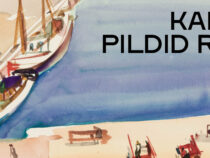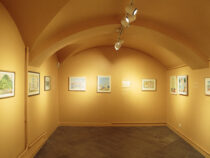07.02.−29.03.2015
Curator: Rael Artel
The show My Poland. On Recalling and Forgetting presents the audience with a selection of works of contemporary art that deal in one way or another with the aftermath of the Second World War in today’s Poland. Although both the war and Poland seem to be so far away from our daily reality and ourselves, we should discuss it in order to better understand our own history, to acknowledge the minorities in our society and to address growing extremism and xenophobia. The world we live in today is rooted in the past and, often, historical events influence the present more strongly than the will and wishes of the current day. The exhibition aims to draw a link between history and present reality and rethink that bitter historical event from the point of view of today. My Poland. On Recalling and Forgetting continues the tradition of Tartu Art Museum in presenting and discussing contemporary art from neighboring countries and cultural contexts.
The main feature that characterises the set of artworks on display are the notions of recalling and trauma. The exhibition brings together works that could be seen as a number of artistic proposals to talk about a painful episode from the past and to deal with this particular traumatic experience in contemporary reality. Commemorating the tragic events, perceiving history through the prism of humour, proposing measures to compensate the injustices done, branding and marketing history, re-enacting it – these are just a few strategies artists have used to touch on the painful and unpleasant topics of recent history.
The museum is a memory institution and our job is to remember. Although some historical events are painful and shameful, they still exist – in 2015, seventy years will have passed since the end of the Second World War, the most brutal conflict in human history. During these very days seventy years ago, the global community was shocked by the horrific images that leaked into the world press of the situation in the concentration camps in the first moments of their liberation. These images were incredibly shocking and it was difficult to believe that the events they showed had really been happening in the centre of Europe. The majority of the larger concentration camps, where more than five million people were killed, were located in the territories of Poland. The global community had to take a position on what had happened and Poland had to live on with the fact that it was in their city centers and backyards that it had all happened. The horrific events are not forgotten and still occupy both space and minds.
Last autumn, the team of Tartu Art Museum made a research trip to Poland and, while visiting the major leading art institutions in the country, viewing their permanent displays and meeting the artists, the question of how to discuss the historical events that happened during the war in Poland were raised. What kind of rhetoric is it relevant to use? How should we talk about the concentration camps? Do we have eyes and ears to learn about the suffering of Others while our own past is so much closer to us? Or we are so occupied with our own national trauma that the suffering of the Other does not concern us and allows us to push the issue of the Holocaust to subtle unconsciousness?
These visual artists whose works are exhibited in My Poland. On Recalling and Forgetting, have a language and voice to talk about it. Let’s use the opportunity to listen to and follow them!
Welcome!






